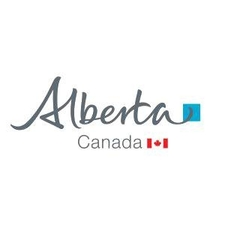74D
Type of resources
Topics
Keywords
Contact for the resource
Provided by
Formats
Representation types
Update frequencies
status
-

This data set is a GIS version of the surficial geology point features for the Waterways area Alberta (NTS74D), as mapped at 1:250,000 scale by L.A.Bayrock.
-

This data set is a GIS version of the surficial geology areal features for the Waterways area Alberta (NTS74D), as mapped at 1:250,000 scale by L.A.Bayrock.
-

This data set is a GIS version of the surficial geology lacustrine deposit features for the Waterways area Alberta (NTS74D), as mapped at 1:250,000 scale by L.A.Bayrock. It serves as an overlay on the polygon features that depict the map units.
-

This data set is a GIS version of the surficial geology linear features for the Waterways area Alberta (NTS74D), as mapped at 1:250,000 scale by L.A.Bayrock.
-

This data set is a GIS version of the surficial geology areal features' outlines, i.e., map unit contacts, for the Waterways area Alberta (NTS74D), as mapped at 1:250,000 scale by L.A.Bayrock.
-

All available bathymetry and related information for Willow Lake were collected and hard copy maps digitized where necessary. The data were validated against more recent data (Shuttle Radar Topography Mission 'SRTM' imagery and Indian Remote Sensing 'IRS' imagery) and corrected where necessary. The published data set contains the lake bathymetry formatted as an Arc ascii grid. Bathymetric contours and the boundary polygon are available as shapefiles.
-

All available bathymetry and related information for Willow Lake were collected and hard copy maps digitized where necessary. The data were validated against more recent data (Shuttle Radar Topography Mission 'SRTM' imagery and Indian Remote Sensing 'IRS' imagery) and corrected where necessary. The published data set contains the lake bathymetry formatted as an Arc ascii grid. Bathymetric contours and the boundary polygon are available as shapefiles.
-

All available bathymetry and related information for Willow Lake were collected and hard copy maps digitized where necessary. The data were validated against more recent data (Shuttle Radar Topography Mission 'SRTM' imagery and Indian Remote Sensing 'IRS' imagery) and corrected where necessary. The published data set contains the lake bathymetry formatted as an Arc ascii grid. Bathymetric contours and the boundary polygon are available as shapefiles.
-

This dataset contains an extract of water chemistry data from the Cold Lake - Beaver River Basin project area. The work was completed in 2004 under contract to Alberta Environment (AENV). Information was obtained from industry and government sources. These data are available in three text files, each representing one table in the original database. See the accompanying jpg of the original relationship diagram to understand how the data in the text files tables are related.
-

The dataset was developed as part of the Western Economic Partnership Agreement (WEPA) project covering all of NTS 73M, southern three-quarters of 74D and southeast part of 84A. It contains all the linear landform features such as eskers, flutings and melt-water channels, etc. Part of the dataset was complied by air photo interpretations and followed by random ground-truthing (NTS73M) by AGS geologists. Dataset was then merged with other existing surficial geology maps (NTS 74D and 84A). Analysis of surficial geological materials, aspects of local relief, and morphological characteristics of surface landforms form an integral component in the evaluation of recharge fluxes to regional groundwater flow systems. To assist in the evaluation of groundwater recharge, terrain analysis maps were constructed in GIS format at a scale of 1:50 000 and 1:250 000 for most of the study area, including all of map NTS 73M (Winefred), the southern three-quarters of map NTS 74D (Waterways), and the southeast part of NTS 84A (Algar). Surficial geology maps of the portion of the study area that lies within map area NTS 83P (Pelican) were published by the surficial geology group in the Minerals Section of the Alberta Geological Survey. The terrain analysis maps in NTS 73M and NTS 84A were constructed almost entirely from the interpretation of 1:60 000 scale aerial photographs, supplemented with only a minor amount of ground verification. Terrain analysis maps in the area defined by NTS 74D were constructed from both aerial photograph analysis as well as from published surficial geology information (Bayrock, L. and Reimchen, T., 1973). Classification of the terrain was based on interpretations of landform types, tonal reflections of surface materials, differences in vegetative cover, and differences in drainage patterns and characteristics, all of which can be identified on aerial photographs. It is for this reason that the maps are referred to as aerial photograph terrain analysis maps, rather than surficial geology maps, which generally have a greater amount of ground verification. The reader is therefore cautioned that a higher degree of uncertainty exists regarding the information depicted on the terrain analysis map, compared to that on a surficial geology map.
 Arctic SDI catalogue
Arctic SDI catalogue